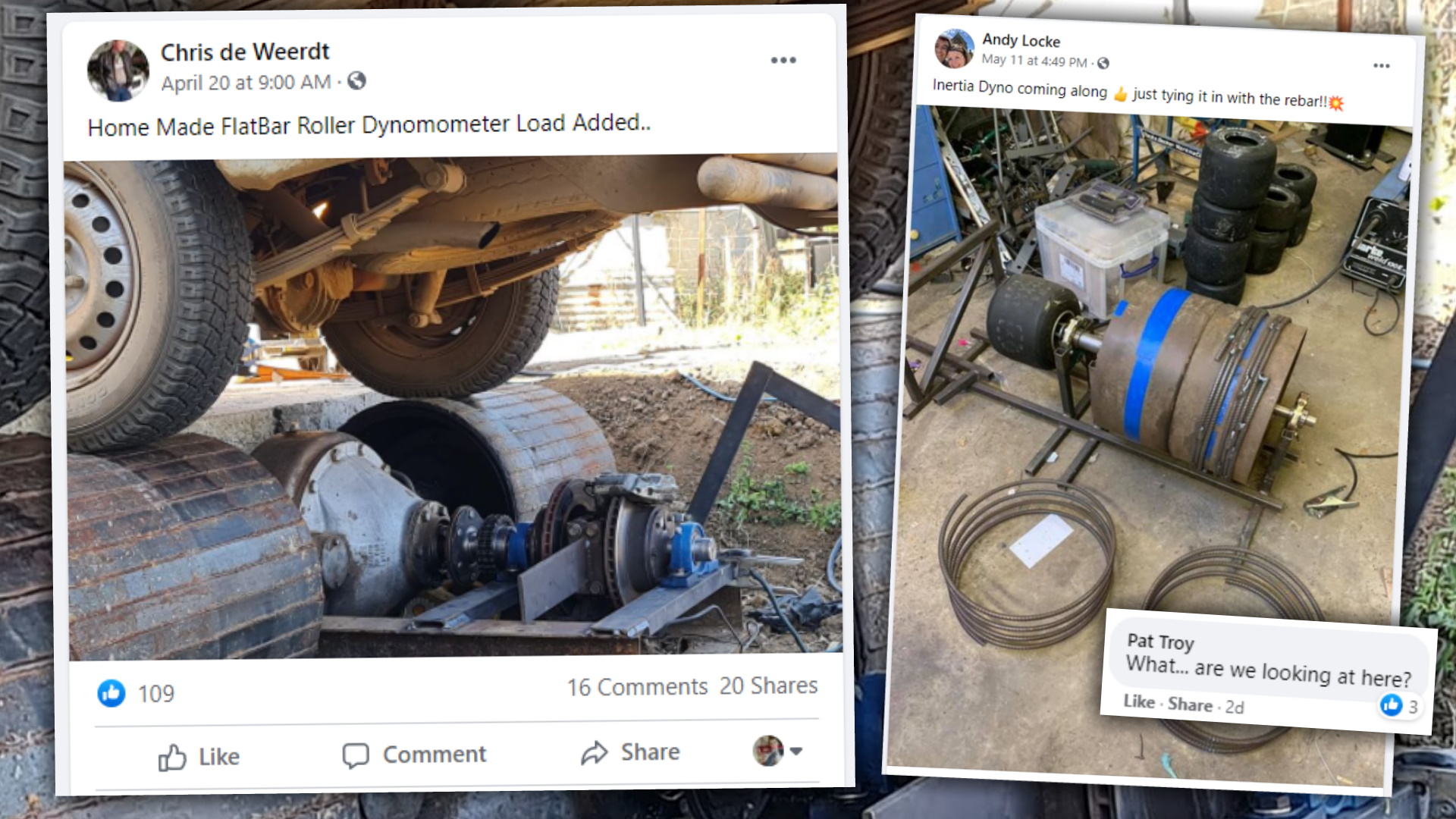

Dynamometers are extremely useful tools for benchmarking a vehicle’s performance. They aren’t without issues, though; they’re expensive to buy, take up a lot of space, and require training or experience to operate correctly. As a result, time on a dyno can be very expensive.
That’s where the Facebook group “DIY Dyno” comes in. No, we aren’t pulling your leg, it’s a group full of people—some admittedly seeming a bit brighter than others—who are building custom dynamometers in their home shops, driveways, and garages.

Now, let me be as crystal clear as I can here before we continue any further. Not everybody in this group is building giant rotating death wheels. Really, the outlook of its members is an honest one: get all the advantages of a dyno without having to pay for a new one. Some group members sell used dynos, others sell dyno parts and electronics—most people in the group just want to know what sort of power their car makes or want to do some tuning. They’ve also got time on their hands to develop custom solutions.
The following examples are not that. The posts listed below are all of the sketchy dynos people are cooking up at home. The fact that people are putting themselves in serious danger just to measure their car’s performance is pretty tight. Priceless if you ask me.
The dyno above is two heavy rollers mounted to bearings. On one end, there’s a kart tire. That’s where the actual tire of a vehicle will go when the owner of this finely crafted device wants to measure its power. You’ll notice the rebar welded to these rollers. The builder never makes it clear what the rebar is for. Commenters suggest it’s for throwing the wheels off balance and causing a fatal accident. The builder, in response, admits that “I have been working on this for a while now, but the exploding image has gone through my mind.” Sharp as a tack, this guy.
If you’re wondering how this sort of dyno works, it’s of the inertial variety. Basically, the rollers are a known mass and when you accelerate them over time you can calculate the torque applied to them, aka, the amount of torque the vehicle on the dyno is producing. If you know the rpm, you can plug it into a simple formula and calculate the car’s horsepower at the wheels.
That all sounds, well, deceivingly simple. The reality is that you need a lot of inertia for these sorts of devices to really work, hence the heavy rollers. They’re heavy enough that there will be a serious problem if the rollers are imbalanced. The associated vibrations stemming from imbalance could destroy the bearings they’re mounted to and basically turn the rollers into… well, hundreds of pounds of steel traveling at thousands of rpm on the floor of your garage. It would hit the ground and spin nearly stationary for a moment like something out of the Looney Tunes, find some grip, and then continue on its merry way killing anything in its path before rolling off into the next county. Speaking of rolling off into the next county…
This example is from South Africa. The builder excavated the area behind his driveway to install it. It’s a truck differential with two homemade rollers mounted to it. The builder says the rollers are several pieces of steel flat-bar welded into a circle.
This is a brake-type dyno; you can tell by the automotive disc brake mounted to the output of the truck differential. Modern brake dynamometers—this is where the term brake horsepower comes from—typically use water or another fluid to resist the movement of a rotor or impeller. This acts as a brake and if you know how much resistance you’re providing over time, you can calculate torque and the rest is history. You can use a lot of different things as a brake, and this guy just chose to use part of an automotive braking system. A test of this homemade device is embedded below.

As mentioned before, the whole group isn’t full of stuff like this, but a fair number of the posts do have some sketchy behavior going on. Really, it’s worth it to scroll down through the entire thing, just to see what’s there. You’ll laugh, you’ll be terrified—I promise it’s a good time.
Got a tip or question for the author? You can reach them here: peter@thedrive.com